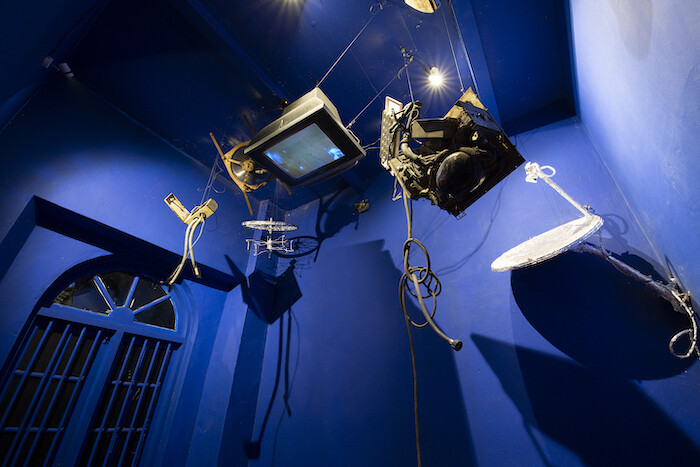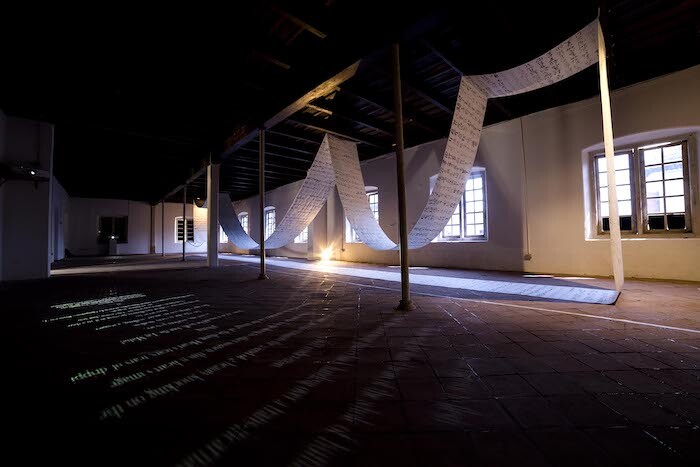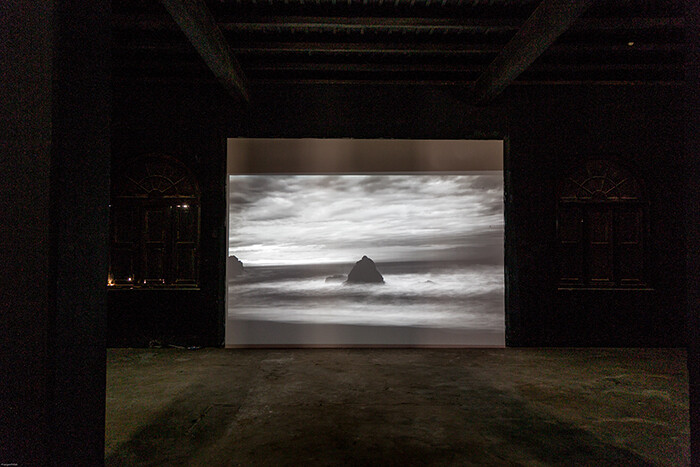Categories
Subjects
Authors
Artists
Venues
Locations
Calendar
Filter
Done
January 18, 2019 – Review
4th Kochi-Muziris Biennale, "Possibilities for a Non-Alienated Life”
Balamohan Shingade

In August 2018, four months before the fourth Kochi-Muziris Biennale opened, Kerala was hit by a catastrophic monsoon. It resulted in the worst flooding in the region for over a century: more than 300 people died and an estimated 220,000 were left homeless. The devastation of the floods brings the biennale’s idealistic curatorial vision—to develop “the warm solidarities of community” and a “politics of friendship,” in the words of its curator Anita Dube—into sharp relief. So do allegations of sexual harassment by prominent figures in India’s art world, including one of the biennale’s co-founders, artist Riyas Komu, who stepped down as the biennale’s secretary in October. Visitors may wonder how the biennale can achieve its ambition to engage with local audiences, while at the same time confronting institutional sexism, addressing its international publics, and responding to natural disaster.
A number of the exhibited artworks engage with the ecocatastrophe directly. Prominent among them is Marzia Farhana’s installation Ecocide and the Rise of Free Fall (2018). Suspended on wires in several rooms in Aspinwall House, the biennale’s main venue, are objects salvaged from flooded areas in Kerala: refrigerators, ceiling fans, vending and washing machines, books, and so on. At the Pepper House, Veda …
January 13, 2017 – Review
3rd Kochi-Muziris Biennale, “Forming in the pupil of an eye”
Emma Sumner

Guest curated by artist Sudarshan Shetty, the third edition of the Kochi-Muziris Biennale (KMB), titled “Forming in the pupil of an eye,” is an assembly of artist-created realities. Shetty outlines his curatorial concept with the story of a young traveler who went on a long journey to meet a sage. When he reaches her, “the Sage assimilates the entire universe. In that single moment and one vision, she grasps its enormous multiplicity—internal and external—and reflects those multiple images back onto the boy and back into the space between them both. Through the generation and layering of visions, the Sage creates multiple understandings of the world, speaking those to the young traveller in front of her.” Like the sage’s vision, Shetty’s exhibition layers various worldly positions in a single space.
As visitors navigate across the Biennale’s 12 venues in Fort Kochi, they are likely to encounter a number of auto rickshaws proudly displaying a KMB-branded “It’s My Biennale” sticker. Latvian artist Voldemārs Johansons’s intervention, Convocation (2016), also makes use of the city’s autos, replacing the horns of hundreds of local rickshaws with a variety of unusual sounds, including bird songs, whistles, and sirens, which will fill Kochi’s streets for the duration of …
January 20, 2015 – Review
2nd Kochi-Muziris Biennale, “Whorled Explorations”
Erika Balsom

Along the edge of the Arabian Sea in Fort Kochi, men haul in so-called Chinese fishing nets, now a popular tourist attraction, while beyond them container ships move in and out of the industrial port. Both testify to the region’s importance as a site of transnational circulation, centuries old and still ongoing. The area is thought by some to have been the ancient city of Muziris, a key stop on the Silk Road. This legacy is evoked in both the name of the Kochi-Muziris Biennale and the curatorial premise of its second edition, “Whorled Explorations.”
On a wall facing the water, hand-painted graffiti shows two men throwing banknotes into what might be a fire. A third looks on, giving the thumbs-up. The caption reads “AGAINST BIENNALE.” This image reiterated what has been perhaps the most discussed dimension of the exhibition: money. The state government of Kerala promised to provide 63 percent of the Rs 26 crore (approximately 4.2 million US dollars) budget, but had delivered only Rs 2 crore by the opening. Perilously close to that date, private patrons were approached in an effort to avoid a repetition of the first edition, when many works were not installed on time. As …